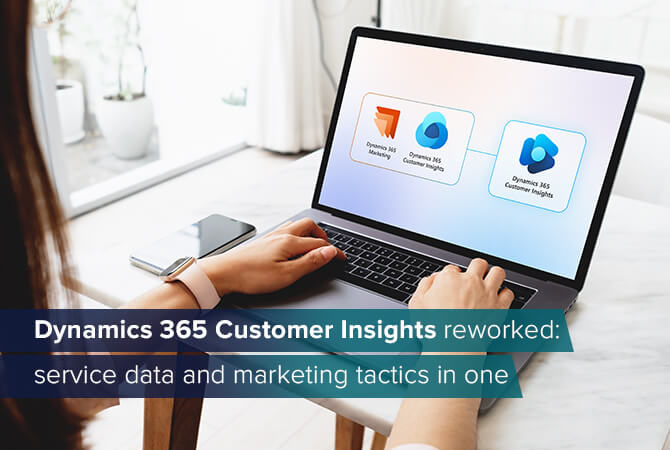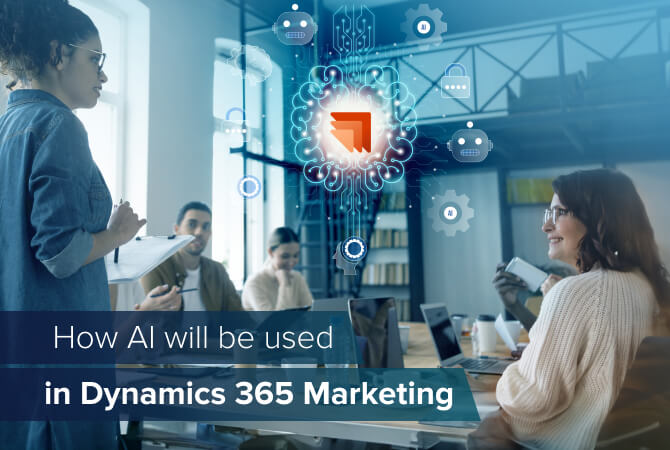
From Outbound marketing to Real-time journeys in Dynamics 365: A transition Q&A
Content
As the marketing landscape evolves, companies must adapt to stay ahead. One significant change on the horizon is the removal of the Outbound marketing module from Customer Insights – Journeys (formerly known as Dynamics 365 Marketing) on June 30, 2025. However, this is no reason to panic. Instead, it is better to start planning your transition ahead.
To avoid any disruptions in your business operations and spare yourself of unnecessary stress, it is better to begin preparing for this shift now. This guide will walk you through the entire process, detailing what to expect, what to do, how to prepare, and what exactly is going to be different.
What is happening: The transition timeline
In September 2023, Microsoft announced that Dynamics 365 Customer Insights and Dynamics 365 Marketing come together to create an AI solution that was designed to revolutionize your marketing experience: Dynamics 365 Customer Insights.
There are two apps within the above-mentioned solution:
- Customer Insights – Data (formerly Dynamics 365 Customer Insights) enables you to fully understand your customers through a 360-degree profile.
- Customer Insights – Journeys (formerly Dynamics 365 Marketing) helps you interact with your customers using personalized experiences tailored to their profiles.
Somewhat in the same timeframe, Microsoft also released the news about the transition from Outbound marketing module to Real-time journeys. And this is where things become a little tricky for your company if it relies on using Dynamics 365 Marketing in your daily work. Let’s figure out how exactly this change is going to affect your business.

How does the removal of Outbound marketing affect my business?
There are two types of users in this world: those who just became a customer of the Customer Insights – Journeys app, and those who have been using it for years. Regardless of where you stand, what is important is your next step – the transition from Outbound marketing to real-time engagement:
| New customers | Existing customers |
| If you are one of the recently joined customers, you get Real-time journeys from the beginning (including event planning). Therefore, you have nothing to worry about, as you have already started with the most current and advanced technology. You will be able to avoid the time and possible expense of transitioning from outbound later. | As to the existing customer environments using Outbound marketing, you might have noticed already that the feature displays a new product name but otherwise remains unchanged. When setting up a new environment, copying an existing one, or upgrading a solutions-only environment to a paid version, Outbound marketing is not installed by default. |
Note: If the system identifies an existing environment with Outbound marketing in the same region, the Settings > Version page will display an Enable outbound link to install outbound.
When is the best time to transition to real-time?
You might already anticipate the answer to the “when?” question. It is “now”. Now is a perfect time to transition since you do not have to rush yet – you still have plenty of time before the deadline. Rest assured that the product telemetry data and customer feedback will be used to allow enough time for all customers to plan and complete their transition before support for Outbound marketing ends.
However, with so much time left, you may be tempted to procrastinate – but, as mentioned before, the time really is now. Real-time journeys offers the majority of Outbound marketing capabilities. Still, it also provides a lot more: the ability to respond and react in near-real time, a large scale of 100 million contacts/300 million interactions in public preview (with even more on the roadmap), as well as generative AI capabilities and Copilot on board. These features (and more) are only available in real time and will not be added to the Outbound marketing module.
How do I transition from Outbound marketing?
Nobody can understand the rhythm and the needs of your business better than yourself. Thus, you need to take time to carefully evaluate the capabilities you use in Outbound marketing as well as the availability of resources you currently possess. Depending on the results, you will be able to see what’s best in your particular case: transitioning all at once or gradually.
If you decide to go with a one-shot transition, you will need to recreate all your journeys, segments, and other assets in Real-time journeys and switch to them within a few days. On the other hand, you can opt for transitioning gradually over time by creating new campaigns in Real-time journeys while letting your current campaigns run in Outbound marketing until they finish. This gradual approach helps your team build confidence with the new features and develop their skills steadily.

Note: Check out the Real-Time Journeys transition resources that might help you cover transition planning and provide you with tools for each major product area.
No matter which approach you take, it’s important to review the Outbound marketing features you’re currently using, check if they’re supported in Real-time journeys , and decide if you need to transfer any data or assets. If you discover that some Outbound marketing features you need aren’t available on Real-time journeys, keep in mind that Microsoft is working on additional features that customers have requested.
What am I gaining after the transition?
It is nice to know that switching from Outbound marketing to Real-time journeys not only involves some hustle but also brings real benefits that can improve the quality of life for both your customers and employees. These benefits include AI capabilities, optimized interactions with customers, sales and marketing working as a single unit, and more.
Generative AI features to provide more for less
If you work in marketing, Real-time journeys with several built-in Copilot capabilities are always there to help you improve your day-to-day results:
- Use natural language to achieve different goals, just like when talking to a coworker:
- Target the right audience
- Rewrite the existing content
- Create new journeys
- Get image recommendations to complement your emails.
- Prevent messages from being sent when you don’t want them to be.
- Receive guidance on every step of your domain authentication.
Optimization of every interaction
- Integrate with Dynamics 365 Customer Insights – Data seamlessly.
- Create journeys for contacts and leads in Dataverse or profiles from Customer Insights.
- Respond to customer actions immediately using built-in triggers, custom triggers, or any data changes in Dataverse, all without coding.
- Improve audience targeting with advanced segmentation and unlimited segments.
- Send messages through text, push notifications, and custom channels, using AI to choose the best one.
- Use hyper-personalization features like dynamic text and no-code conditional content for personalized campaigns tailored to individual preferences.
Sales and marketing efforts combined
- Easily create registration forms, find leads, organize events, and create nurturing journeys.
- Use detailed criteria to better identify and prioritize leads with the new lead scoring tool.
- Share a unified timeline of customer activities to align with sellers.
- Transfer qualified leads to the sales team or involve sales representatives at the right time by scheduling calls or triggering sales sequences to increase the chances of closing deals.
Scaling your business
- Use business units, brand profiles, and the new consent center to customize Real-time journeys for your business needs.
- Scale your business with 300 million monthly interactions and reach up to 100 million marketing contacts.
Conclusion
Switching from Outbound marketing to Real-time journeys might seem daunting, especially for the companies that have been using the former for quite some time. However, this change can provide you with a chance to innovate and improve your marketing approach. With the right planning and resources, you can turn this transition into a strategic advantage.
Should you find yourself in need of professional assistance on this journey, feel free to contact proMX. Whether small, medium or large organizations – we always provide the best possible consultations and guidance for our customers.







